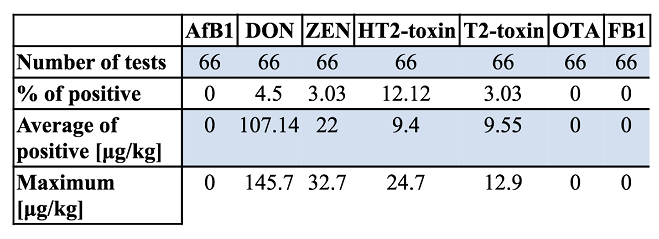A new mycotoxin survey has shown this year’s harvest of wheat in the UK and Ireland is of very good quality in terms of its high levels of freedom from mycotoxin contamination.
“We believe this year’s wheat crop may be considered safe for inclusion in finished feed rations for all animal species,” said Nutriad, the global feed additive company which commissioned the survey.
“Vigilance is always advisable, however, as cereals in animal feeds originate from many sources and some continental European cereals harvested in 2015 have been shown to be contaminated with medium concentrations of mycotoxins.
The 2015 Nutriad Mycotoxin Survey covered 66 samples from all over the UK and Ireland with more than 460 individual analyses being conducted to test for the occurrence of the seven mycotoxins most frequently found in agricultural commodities intended for animal production.
The seven are:
- aflatoxins (Afla)
- zearalenone (ZEN)
- deoxynivalenol (DON)
- T-2 toxin
- HT-2 toxin
- fumonisin B1(FB1)
- ochratoxin A (OTA)
Table shows mycotoxin survey results for wheat in UK & Ireland
Mycotoxins are highly toxic secondary metabolic products of moulds which can damage crops and cause “great economic losses” at all levels of food and feed production. Moreover, many mycotoxins impair health, cause diseases and may even result in death in humans and animals when contaminated food or feed products are consumed.




